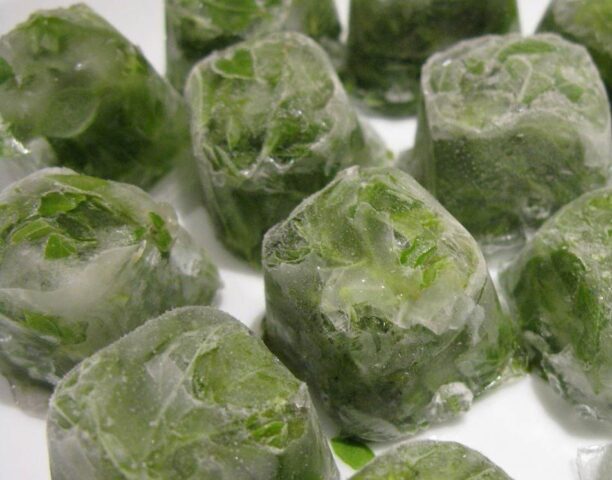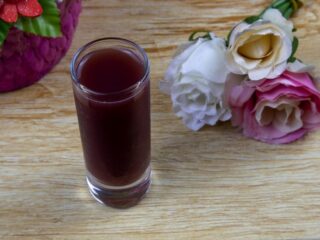Content
Raspberry tea has a pleasant aroma and contains many useful components. But in order to be able to cook it not only in summer, but also in winter, it is necessary to properly prepare and preserve the raw materials. Fermenting raspberry leaves at home allows you to preserve the maximum amount of vitamins and minerals. To carry out the procedure correctly, you need to study its main stages in advance.

Fermentation converts insoluble compounds into an accessible form for the human body
Why ferment raspberry leaves?
Tea made from fermented raspberry leaves has a pleasant rich aroma, dark hue and unusual taste. It is impossible to achieve such a result using simply dried raw materials.
Fermentation causes the breakdown of organic compounds. This occurs with the participation of bacteria that are on the leaves and air, as well as enzymes. This is the method used to prepare black tea, which is familiar to everyone.Thanks to this, it acquires astringency, a dark shade, and a rich aroma. The same cannot be said about green tea, because it does not undergo fermentation.
Health benefits of fermented raspberry leaf tea
Tea made from raspberry leaves after this treatment is not only tasty, but also a healthy drink. It helps solve many health problems and strengthen the immune system.
Beneficial features:
- relieves inflammation;
- promotes the removal of sputum;
- improves blood clotting;
- removes toxins and waste from the body;
- improves metabolism;
- increases sweating;
- has a general strengthening effect;
- normalizes stool during diarrhea;
- helps strengthen the walls of blood vessels and increase their elasticity;
- stimulates the functioning of the kidneys, liver, bladder;
- improves memory and performance.
This drink can be used for medicinal purposes, as an aid for colds, intestinal problems, high blood pressure, and sleep disorders.
Tea made from fermented raspberry leaves can be given to children. But first you should make a weak brew. If after drinking tea no signs of allergy appear, then you can increase the dosage of dry raw materials.
In some cases, fermented raspberry leaf tea can bring not only benefits, but also harm to human health. To prevent this, you should familiarize yourself with existing contraindications in advance.
Among them:
- individual intolerance;
- constipation;
- gout;
- ulcer;
- gastritis.
Pregnant women under 37 weeks should not drink tea made from fermented raspberry leaves. This is due to the fact that it stimulates labor and can cause miscarriage.
Preparing raspberry leaves for fermentation
Before subjecting natural raw materials to special processing, it is necessary to first prepare it. Raspberry leaves for fermentation can be collected throughout the growing season, but they contain the maximum amount of vitamins and minerals during the flowering period of the bush.
For fermentation at home, you need to prepare raspberry leaves without shoots. They should not show signs of disease or damage. After harvesting, raspberry leaves should be sorted and debris removed. In the case of harvesting in the fall, it is recommended to cut off the hard veins and petioles.

Leaves should not be washed before fermentation to preserve bacteria on their surface.
It is not recommended to pick more than two leaves from the shoot for fermentation, so as not to weaken the raspberry bush. Because the plates provide the plant with nutritional components.
Fermenting raspberry leaves at home
The fermentation process is quite complex. With this treatment, the cells of the plates are destroyed, juice is released, fermentation occurs under the influence of a certain temperature, aging, and only after that the raspberry leaves acquire a rich aroma and a dark shade. For fermentation to be successful, you need to perform all its stages correctly.
Drying
Fresh raspberry leaves contain a lot of moisture. And if it is not removed before fermentation, then this will lead to the appearance of a musty smell of tea.Therefore, drying should be carried out at the initial stage. There are two ways to do this. In any case, the desired result will be obtained.
The first method of drying raspberry leaves before fermentation:
- Spread the raw materials on a fabric mat or tray in a layer of 1-2 cm. Cover the top with gauze to protect from dust and insects.
- Place the raw materials in a shaded place outside or in the house. In this case, the air temperature should not be lower than +24 ° C, and the humidity should not be higher than 70%.
- Raspberry leaves should be turned over every six hours.
Drying should last 12-48 hours, depending on the conditions of detention.
The second way to remove excess moisture before fermentation:
- Prepare a thick, dry cloth.
- Place raspberry leaves on it in one layer;
- Roll into a tight roll.
- Unfold after six hours.
- If necessary, repeat the procedure.
To check the readiness of the raw materials, you need to squeeze the sheet in your hand. After this, it should not unbend. This means that you can proceed to the next stage of fermentation.
Freezing
In the future, it is necessary to destroy the cells of the plates so that juice is released from them. Freezing helps to do this.
Method:
- Pack dried raspberry leaves in a plastic bag.
- Place the raw materials in the freezer for 24-48 hours, or even for a month.

The longer raspberry leaves lie in the freezer, the easier it is to work with them in the future.
Destruction of leaf structure
To achieve maximum juice yield from raspberry leaves, you need to destroy their structure. To do this, roll them into a tube of five pieces and knead them thoroughly until they darken. You can also achieve the desired result if you transfer the raw materials into a bowl and knead them like dough.
If you want to get granulated tea, it is recommended to pass the raw materials through a meat grinder.
Fermentation process
Once a sufficient amount of juice has been released, fermentation begins. For the redox process to proceed successfully, the raw materials must be kept at a temperature of +22-26 °C. If it decreases, fermentation stops, and if it increases, the compounds that give tea strength and rich aroma take on an insoluble form.
Process:
- Place raspberry leaves in an enamel container so that the layer thickness is 7-10 cm.
- Press down the raw material with your hands.
- Place pressure on top.
- Cover the container with damp gauze and then a lid, but leave a gap for air access.
- When the fabric dries, it must be re-wetted.
The duration of the procedure is 6-10 hours+. The raw material is considered ready if it exudes a rich aroma.

Fermentation longer than expected leads to a weakening of the tea's aroma.
Drying fermented tea
For long-term storage, finished raw materials must be dried. But first the leaves must be chopped.
Possible drying methods:
- Oven. Cover a baking sheet with parchment. Lay out the raw materials for tea. Dry at a temperature of +100 °C for an hour, and then lower the mode to +50-60 °C and hold until the liquid has completely evaporated. During the drying process, the tea should be stirred every 20 minutes.
- Air fryer. Transfer the wet raw materials to a tray in an even layer. Place it in a convection oven, preheated to +150 °C and leave for ten minutes. Then stir, lower the mode to +85 °C, leave for 20 minutes. The air fryer must be open throughout the entire drying process.
- Pan. In this case, the raw materials need to be dried in small portions, first for ten minutes over medium heat, and then for 20 minutes on low.In this case, the raspberry leaves must be constantly stirred.
After this, the tea needs to be dried until it is completely ready. To do this, you will need to pour it into a linen bag and hang it in the sun. The duration of the final drying stage takes 1-7 days, depending on weather conditions.

Finished raw materials for tea should break, not tear
How to store fermented tea
Tea can be used no earlier than a month after its preparation. Until this moment, the aroma will still not be sufficiently saturated.
It is recommended to store tea in metal or glass sealed jars, or in linen bags in a dry place with a humidity of no more than 50%. In this case, the product should not be exposed to sunlight.
How to make tea from fermented raspberry leaves
Fermented raspberry leaves should be used in the same way as any other tea leaves. To prepare tea, add 2 tsp. dry raw materials into a cup and fill it with hot water, and then leave for 20 minutes.
To prepare tea in a teapot, you need to pour 2-3 tbsp into a container. l. dried leaves and pour boiling water to the top. Leave the mixture for 20 minutes. And then it can be used as liquid tea leaves.
Conclusion
Fermenting raspberry leaves at home requires following all stages of this complex process in a clear sequence. Only in this case will the tea have a pleasant rich aroma, a dark shade and contain a complex of useful components. Any disregard of the rules leads to a decrease in the quality of the final product and makes it unsuitable for long-term storage.








